business
SMART CITY
SMART
CITY

What is the Smart City?
The city that increases the pace at which it delivers sustainability results (social, economic and environmental) and responds to challenges such as climate change or rapid population growth, fundamentally improving the way it engages society.
The IoT is an ally for the creation of intelligent environments, it allows obtaining enough information to provide better services and quality of life to those who are in the city (residents, businesses, visitors), now and in the foreseeable future, without unfair disadvantages or degradation of the natural environment.
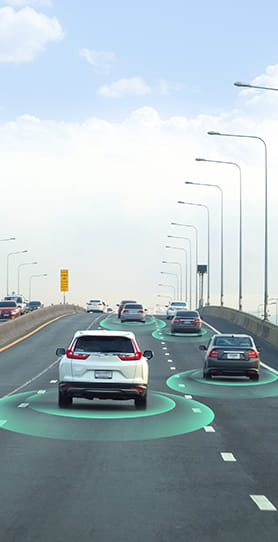
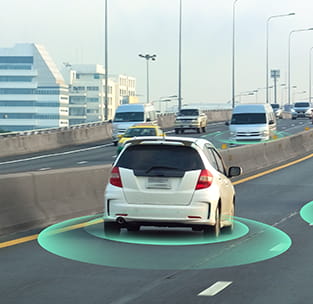
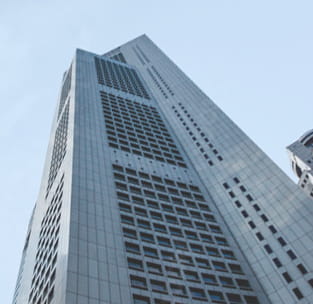

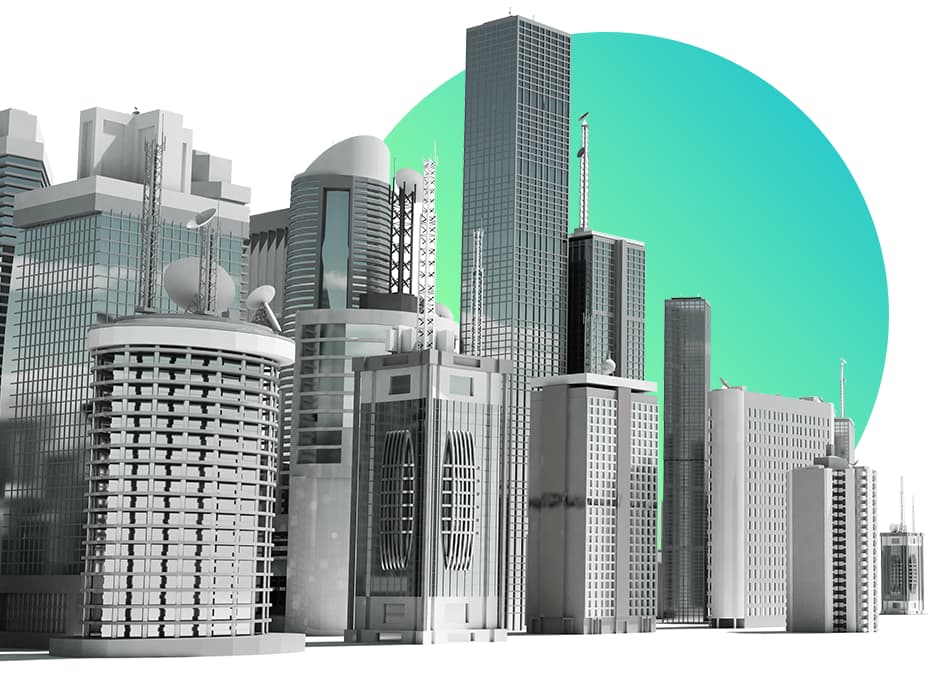
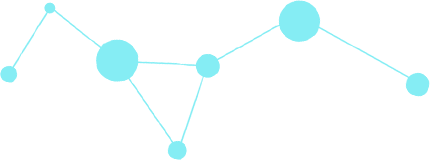
Therefore, the Smart City, beyond being a technologically advanced environment, is an environment capable of comprehending or understanding the situation to improve its ability to solve problems, even to anticipate them in order to overcome them.
How does a Smart City work?
IoT devices allow the interconnection of everyday objects or physical properties of the city with the internet and thus, get the city to communicate its situation.
The IoT system architecture is described as a four-stage process in which data flows from connected sensors to “things” via a network and finally to a cloud data center for processing, analysis, and analysis. and storage.
To this four-phase architecture, DEVLON adds a fifth with the aim of turning data into relevant information for decision-making, improving management and services to citizens.
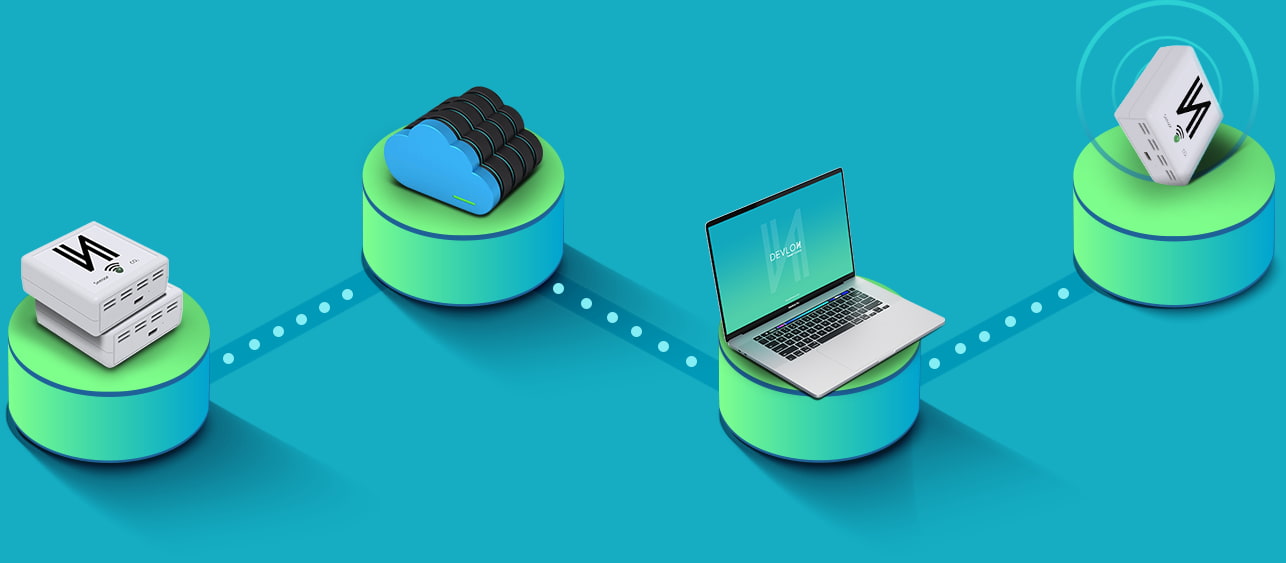
Data capture with IoT device
Communication and storage
Visualization via Devlon Smart Cloud
Action

Data capture with IoT device
Communication and storage
Visualization via Devlon Smart Cloud
Action
How does Devlon consolidate the Smart City?
Devlon consolidates smart cities by designing IoT solutions under these three concepts:
1. Technological accessibility
IoT solutions must be open, interoperable and developed under the same standard. The devices must be as self-sufficient as possible and easily anchored, to facilitate their deployment and energy independence. The devices must be as self-sufficient as possible and easily anchored, to facilitate their deployment and energy independence. By reducing the technical complexity that municipalities assume today, we will achieve digital scalability.
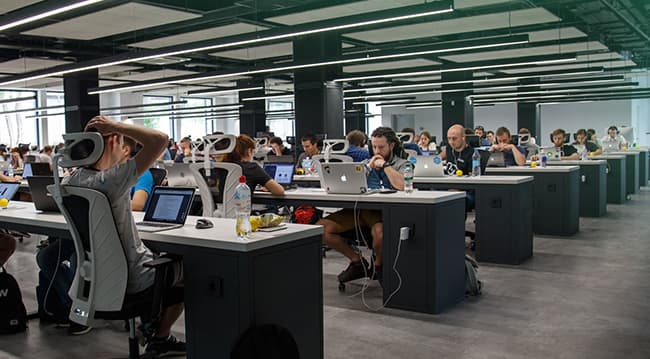

2. City indicators
To convert the data obtained into relevant information, it is necessary to establish City Indicators to measure the performance of services and quality. With the results obtained, a strategy is defined, compliance is managed and, consequently, progress is assessed. At the moment in which action is taken based on the city indicators, it evolves from creating a connected environment to consolidating a smart city.
3. Citizen interaction
The great potential of a smart city consists in putting people at the center of decision-making, introducing improvements in their quality of life and achieving a more efficient environment from an economic, environmental and social point of view.

An IoT solution culminates successfully when there are “technological-citizen” interaction points. De forma que la red de dispositivos dota de conocimiento a los vecinos o turistas y estos son quienes le reportan el valor a la tecnología.
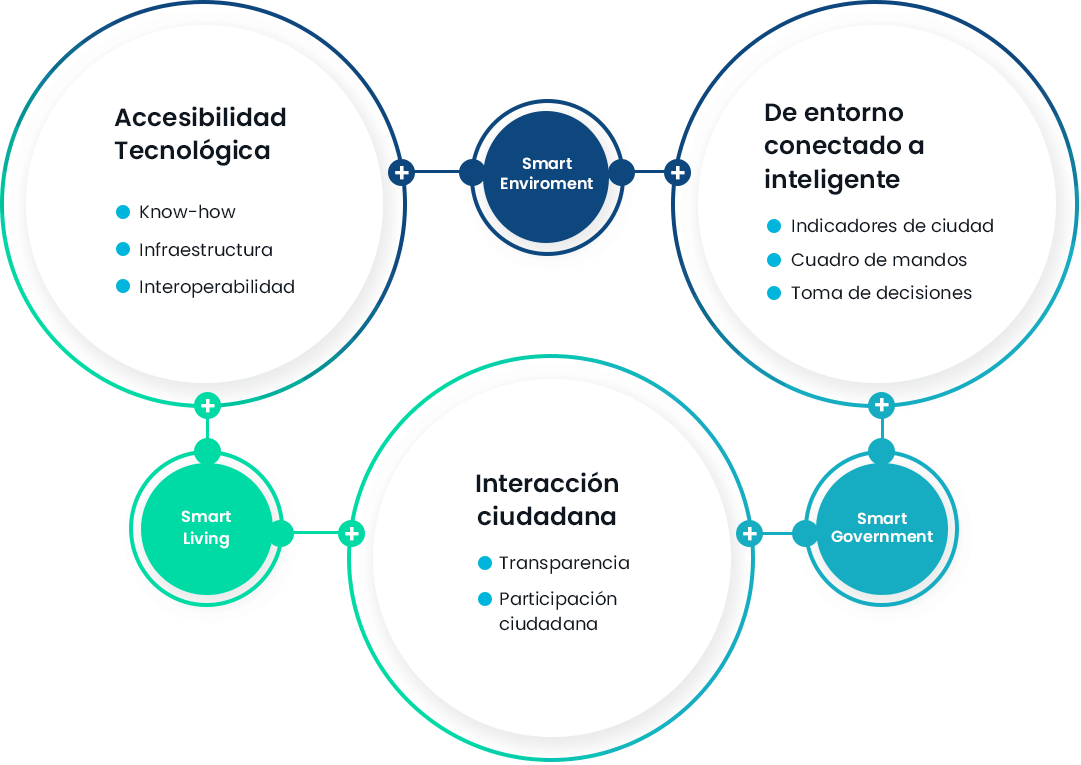
Provide your
municipality with
knowledge for
smarter
decision-making.

Contact us
Frequent questions
hidden by css
Hidden by css so that they appear closed by default
What is the meaning of a Smartcity?
The Smart City is that city that faces the challenges to achieve an efficient, sustainable city that responds to the needs of citizens, reinforcing the need to generate joint solutions and share knowledge. For this, information and a common semantics, physical structures, ICT, society, and an interaction between them and society are needed.
What problems does a Smart City solve?
The city is a system in continuous evolution with multiple and complex iterations between people and their environment, whose management addresses very diverse and increasingly complex aspects. Smart City companies promote solutions to improve the ability to understand or comprehend these problems, meeting the needs of the present without compromising the ability of future generations.
Why do smart cities or Smart City appear?
The urban population has increased exponentially and will continue this trend. This growth generates a great impact (environment, resources, traffic, quality of life, relationships). Smart City companies help municipalities move towards a regenerative, resilient, inclusive and adaptable culture, which serves to create a prosperous future for the planet and for all humanity.
The main tool to achieve this is ICT, which allows intelligent management of processes and interoperability between actors in the environment.
What is it like to live in a smart city?
To live in a smart city is to know the evolution in which the city increases the rate at which it delivers social, economic and environmental sustainability outcomes and responds to challenges such as climate change, rapid population growth, and political and economic instability by fundamentally improving the way it engages society. It uses data insights and modern technologies to provide better services and quality of life to those in the city (residents, businesses, visitors), now and for the foreseeable future, without unfair disadvantage to others or degradation of the natural environment.
Can a normal city become a Smart City?
Any city, regardless of its geographical, demographic and economic situation, can begin its digital transition with a Smart City company.
What does Smart Emviroment ?
The definition given by Smart City companies is as follows: Efficient management of the set of physical elements (structures) oriented to meet the needs of citizens, ensuring the preservation of the environment for future generations and the access and enjoyment of urban space to society. The most representative structures are: the natural environment, infrastructure and urban planning.
What is Smart Government?
Smart City companies define it as the global management of services, integrating government, public and private organizations so that the city can function as a single body, effectively and efficiently managing resources, executing policies and adequately combining the interests of citizens, social organizations, companies and administrations.
What is Smart Living?
It is a broad and multidimensional concept that addresses different aspects related to the individual, and is the fundamental reason for the growth of cities.
Consists of how the citizens or inhabitants of a city perceive their own quality of life, in order to be a desirable city to live and work in that promotes initiatives that affect the well-being of citizens in all its aspects. It favors innovation, education, social cohesion and citizen collaboration.